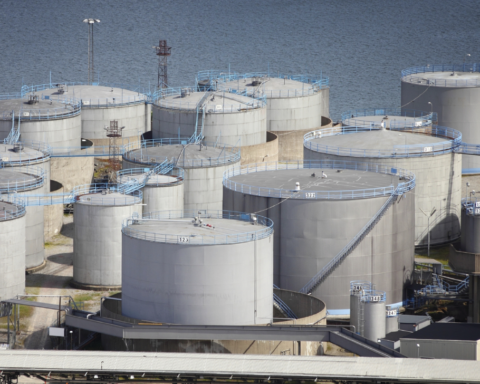Marcel SALIKHOV
President, Principal Director on Economic Studies, Head of the Economic Department
e-mail: m_salihov@fief.ru
Viktor KURILOV
Head of the Economy Modelling Sector, Economic Department
e-mail: v_kurilov@fief.ru
Abstract. The article analyzes the consequences of the declared energy policy of the new US President Joe Biden for the oil shale industry. Despite the advancement of the Green Agenda, the policy of the new administration is unlikely to lead to a significant deterioration in the position of US shale producers on the horizon until 2030. The negative effects will be stronger in 2030–2050, but in the face of falling global oil demand, shale production will be in demand due to its flexibility and short investment cycle.
Keywords: oil market, shale oil, energy policy, elections.
According to the preliminary data, Joe Biden won the presidential elections, which is seen as a negative scenario for the US oil and gas industry. The campaign programs of Joe Biden and Donald Trump in the field of energy policy were opposite. Trump, as during his presidency, relied on supporting traditional industries – steel, coal and oil and gas. At the same time, Biden’s team pledged to fundamentally change policy in favor of a return to the Paris Climate Agreement and achieving the goals of the Green Agenda. Biden’s image in the media space is associated with the inevitable decrease in the role of hydrocarbons in the US energy balance.
Biden’s victory reflects a trend gaining strength in developed countries and around the world: new generations of people are more concerned about climate change. According to PEW Research polls, 51 % of young people in the United States (born after 1981) believe that “global warming is a serious threat throughout their lives”, while only 29 % of respondents among older people (born before 1964) hold to the same view. It can be expected that over time, the topic of combating climate change will become more pressing in the political field: politicians will try to offer a programmatic response to the request of new generations.
However, upon closer examination, Biden’s declared steps in domestic and foreign policy have different – not only negative, but also positive – effects for the shale industry and the oil and gas industry of the US as a whole.
Consequences of Biden’s 2020 election victory for the shale industry
The Biden office’s policy will have a significant impact on the oil market. Positive factors for shale oil producers are likely to be implemented in the short term:
- new relief package for the US economy in the context of the COVID-19 pandemic;
- reducing tension in the “trade war” with China;
- potential imposition of new sanctions against Russia and Saudi Arabia.
Rystad Energy estimates that a new $1 trillion relief package for the US economy could increase demand by 0.4 million bpd as early as in 2021. A change in the direction of US foreign policy towards globalization will gradually lead to an increase in world GDP by 1–2 % by 2025, world oil demand will increase by 0.5 million bpd, on average, providing an increase in demand by 100 thousand bpd per year in 2021–2025.
Biden promises to lift restrictions on oil exports from Iran and Venezuela. This can lead to a return of
2.4–2.9 million bpd to the oil market. However, this is unlikely to be quickly implemented.
It is expected, that relations between the US and Russia will deteriorate, as representatives of the Democratic Party have long intended to impose sanctions due to interference in the US elections, and between the US and Saudi Arabia – due to the murder of journalist Jamal Khakadzhi and other human rights violations. It is difficult to estimate sequential quantitative effects on the oil market. But we should expect the strengthening of partnership relations between Russia and Saudi Arabia within the framework of the OPEC+. The OPEC+ restrictive policies, together with reduced investment in the oil market in proportion to the demand recovery from the COVID-19 crisis, is expected to result in a reduction in commercial oil reserves. According to current forecasts, even a surge in oil prices up to $70 per barrel and higher is possible in 2022–2023.
The negative effect of the declared decisions of the new office for the US shale industry consists of the following factors:
- lifting restrictions on oil exports from Iran and Venezuela;
- toughening of environmental constraints on oil and gas production and on the construction of transport infrastructure in the oil and gas sector in the US;
- cancellation of the issuance of permits for oil and gas production on lands and water areas under the jurisdiction of the US federal authorities;
- US Electric Vehicle and Renewable Energy Program – subsidizing production and sales through tax increase.
Negative effects are likely to be protracted in time.
Biden promises to change the Trump office’s approach to US relations with Venezuela and Iran and lift restrictions on oil exports against these countries. This could lead to a return to the market of supply in the amount of 2.4–2.9 million bpd by 2025. However, these measures are unlikely to be quickly implemented. It can be expected that negotiations with Iran will not begin before the country’s presidential elections, scheduled for June 2021. Before the imposition of sanctions in May 2018, production in Iran was at the level of 4.5 million bpd, and now it has dropped to 2.5 million bpd. It is known that Iranian producers have done a great job to be able to bring the shut down fields into production in the future. By the end of 2022, production increase in Iran by 1.2 million bpd up to 3.7 million bpd can be expected. As for Venezuela, the decline in production began long before the sanctions imposed by Trump on the national company PDVSA. Production in Venezuela has already dropped to 320 thousand bpd in October 2020, in the baseline scenario, there is expected a slow growth in production to 700 thousand bpd by 2025.
The lack of control over the Congress’s upper chamber by the Democratic Party is likely to prevent Biden from imposing strict environmental constraints on oil and gas production. A realistic scenario for restrictive measures could be a ban on the issuance of licenses for drilling and production on lands and waters under the jurisdiction of the US federal authorities. Wood Mackenzie estimates that the ban will have a downward effect on US oil production by 1.3 million bpd by 2025. Also, the authorities can prevent the construction of oil and gas pipelines on the territory of the federal lands, an example of such restrictions is the approval of the Keystone XL oil pipeline, which has been dragging on for years. However, in the current conditions of lowering the level and forecasts for production in the United States, the lack of oil pipelines will limit, first of all, the import of heavy Canadian oil to the US.
Moreover, the new US presidential office may not reach tough restrictions on its own shale industry in the allotted four years, if it aggravates relations with Russia and Saudi Arabia. The shale industry is going through the current crisis, which limits the ability of the authorities to tighten regulation in the coming years.

Source: gifteclipse.com
In 2022–2023, oil prices are expected to reach $60–70 per barrel as a result of the recovery in global demand due to overcoming the pandemic. During this period, tough steps such as banning hydraulic fracturing or canceling the issuance of new drilling and production licenses in the United States also look unlikely due to the risk of additional upward pressure on oil prices.
The key element in the Green Agenda of Biden’s team is the $2 trillion
electric vehicle and renewable energy program aimed at achieving carbon
neutrality in the US energy sector by 2035. By raising taxes on profits, the
state will subsidize the production and sales of electric vehicles.
Even with the implementation of Biden’s “green” program, it is unlikely that the shale industry will be on the verge of bankruptcy. Underinvestment in production will limit the supply of oil
The second component of the program will be a change in regulation (including the Federal Energy Regulatory Commission – FERC) to stimulate renewable energy sources and electric vehicles. However, a significant effect of the program on oil and gas demand should be expected not in the short term, but after 2030. Wood Mackenzie estimates that the implementation of the program will lead to that by 2030, the number of electric vehicles in the US fleet will be 60 % more than that in the scenario without government incentives. But even in this high scenario, the electric vehicle fleet is estimated at 4 million units, which will be only 1.5 % of the total US vehicle fleet in 2030.
Even with the implementation of Biden’s “green” program, it is unlikely that the US shale industry will be on the verge of bankruptcy by 2030. First, the underinvestment in production in the oil market in 2020–2022 will restrict supply in the second half of the 2020s, so prices for oil, even in zero carbon scenarios, will be at the level of $50 per barrel or higher. Second, the US shale industry is highly flexible and has a short investment cycle. In 2025–2030, flexible manufacturers in the US and the Middle East can be expected to fill potential gaps between demand. The flexibility of production processes is likely to ensure the viability of the shale industry in the longer term. Investments in conventional production with a long payback period will become extremely risky during the expected decline in global oil demand in 2030–2050, so flexible shale projects may still be desired to meet demand.

Source: IEF based on the data of US Department of Energy (EIA) and Wood Mackenzie estimates

Source: IEF based on data and forecasts of the US Department of Energy (EIA)
While significant changes in the automotive sector can be expected not earlier than the second half of the 2020s, a significant breakthrough in achieving the goals of the Green Agenda in the United States in 2020–2024 may be (1) replacement of coal in the structure of the energy balance due to shale gas (2) with a simultaneous increase in the utilization of volumes of associated petroleum gas currently burnt on shale deposits. According to the forecasts of the US Department of Energy, the new executive office, contrary to its “Green Agenda”, may face an increase in coal consumption in 2021. The increase in coal consumption is expected in response to the rise in gas prices due to inter-fuel competition. In turn, the rise in domestic prices for natural gas in the US results from a reduction in supply associated with the crisis in the shale industry and the decline in shale oil production.
The office can step up pressure on the coal industry through environmental constraints. An additional factor in favor of this policy is the potential increase in the supply of shale gas due to the launch of new gas pipelines in Texas and North Dakota. The new pipelines will make it possible to utilize associated petroleum gas in shale basins instead of burning it.
Biden’s policy will have a negative effect on shale gas production in the US in the long term, in 2030–2050. In particular, offshore wind energy could get big incentives under the new executive office. Under the Trump presidency, wind power projects have faced regulatory restrictions, including a ban on wind farms construction on the Atlantic coast from Florida to Virginia.
The new executive office, contrary to its “Green Agenda”, may face an increase in coal consumption in 2021, which will be a response to the rise in gas prices due to inter-fuel competition.

Source: IEF based on data and forecasts of the US Department of Energy (EIA)
Conclusion
Despite the advancement of the Green Agenda by Joe Biden, the main effects of his policy will have an impact on shale producers in the long term. Until 2030, the effect of the new US energy policy on the shale industry will be neutral or moderately negative. In particular, it can be expected that shale gas will be promoted as a source of energy to replace coal in the US energy balance. At the same time, the development of electric vehicles and renewable energy sources is unlikely to lead to a rapid deterioration in the position of shale producers, since shale production as a flexible source of supply will be in demand even with a declining demand for oil in 2030–2050.
References
1. Drilling Productivity Report (DPR) // EIA November, 2020 [electronic resource]. – URL: https://www.eia.gov/petroleum/drilling/ (accessed on 13.04.2020).
2. Short-Term Energy Outlook (STEO) // EIA November, 2020 [electronic resource]. – URL: https://www.eia.gov/outlooks/steo/archives/nov20.pdf (accessed on 10.11.2020).
3. US Elections: Biden win brings new approach to energy markets // S&P Global Platts, 2020 [electronic resource]. – URL: https://www.spglobal.com/platts/en/oil/refined-products/jetfuel/110920-us-elections-biden-win-brings-new-approach-to-energy-markets (accessed on 09.11.2020).
4. US election and oil: A Trump win may make prices great again while Biden effect more mixed // Rystad Energy, 2020 [electronic resource]. – URL: https://www.rystadenergy.com/newsevents/news/press-releases/us-election-and-oil-a-trump-win-may-make-prices-great-again-while-biden-effect-more-mixed/ (accessed on 03.11.2020).
5. Five consequences of a Biden administration for US energy // Wood Mackenzie, 2020
[electronic resource]
. – URL: https://www.woodmac.com/press-releases/five-consequences-of-a-biden-administration-for-us-energy/
(accessed on 07.11.2020).







